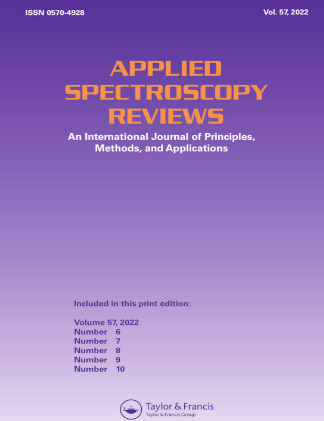Flow field-flow fractionation hyphenated with inductively coupled plasma mass spectrometry: a robust technique for characterization of engineered elemental metal nanoparticles in the environment
IF 5.4
2区 化学
Q1 INSTRUMENTS & INSTRUMENTATION
引用次数: 7
Abstract
Abstract Due to the increased applications of engineered elemental metal nanoparticles (EMNPs) in recent years, increased attention has been devoted to their release into the environment. EMNPs pose potential risks to living organisms, including human beings. Hence, the characterization of EMNPs in the environment has gained significant importance. Among the various techniques reported for the characterization of EMNPs, on-line coupling of flow field-flow fractionation with inductively coupled plasma mass spectrometry (F4-ICPMS) has been well established for the simultaneous separation, identification, and quantification of EMNPs, especially in the complex matrices of environmental samples. Thus, this review focuses on the specific advantages of the F4 method, especially the asymmetrical F4 (AF4) and hollow fiber F4 (HF5) methods, in the separation of EMNPs, the general development of AF4-ICPMS and HF5-ICPMS techniques, and recent advances in the application of these hyphenated techniques in examining the occurrence and transformation of EMNPs in the environment. Finally, several perspectives on these techniques have been put forward.流场-流分馏结合电感耦合等离子体质谱法:一种用于环境中工程元素金属纳米颗粒表征的可靠技术
近年来,由于工程元素金属纳米颗粒(EMNPs)的应用越来越广泛,其释放到环境中的研究受到越来越多的关注。EMNPs对包括人类在内的生物构成潜在风险。因此,环境中EMNPs的表征变得非常重要。在已报道的表征EMNPs的各种技术中,流场-流分馏与电感耦合等离子体质谱(F4-ICPMS)的在线耦合已被很好地建立起来,用于同时分离、鉴定和定量EMNPs,特别是在环境样品的复杂基质中。因此,本文将重点介绍F4方法,特别是不对称F4 (AF4)和中空纤维F4 (HF5)方法在分离EMNPs方面的具体优势,AF4- icpms和HF5- icpms技术的发展概况,以及这些连接技术在检测环境中EMNPs发生和转化方面的最新进展。最后,对这些技术提出了几点展望。
本文章由计算机程序翻译,如有差异,请以英文原文为准。
求助全文
约1分钟内获得全文
求助全文
来源期刊

Applied Spectroscopy Reviews
工程技术-光谱学
CiteScore
13.80
自引率
1.60%
发文量
23
审稿时长
1 months
期刊介绍:
Applied Spectroscopy Reviews provides the latest information on the principles, methods, and applications of all the diverse branches of spectroscopy, from X-ray, infrared, Raman, atomic absorption, and ESR to microwave, mass, NQR, NMR, and ICP. This international, single-source journal presents discussions that relate physical concepts to chemical applications for chemists, physicists, and other scientists using spectroscopic techniques.
 求助内容:
求助内容: 应助结果提醒方式:
应助结果提醒方式:


